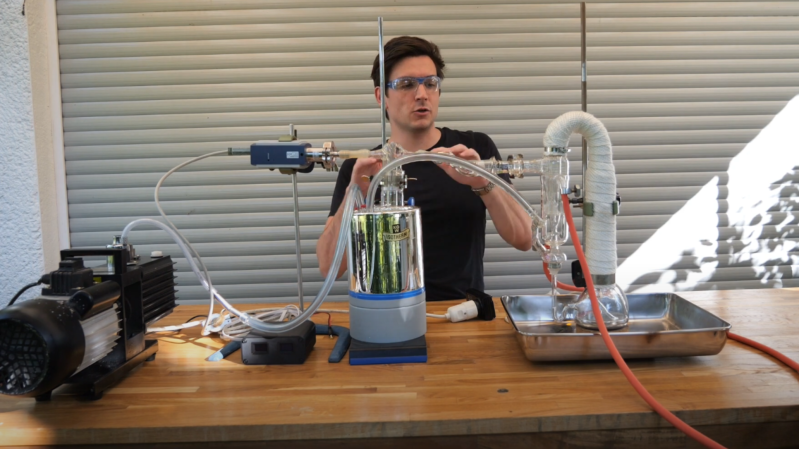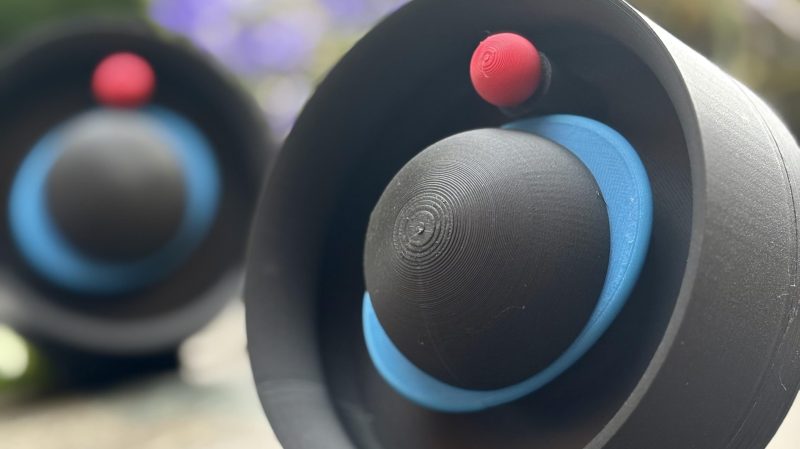Pulling a High Vacuum with Boiling Mercury
If you need to create a high vacuum, there are basically two options: turbomolecular pumps and diffusion pumps. Turbomolecular pumps require rotors spinning at many thousands of rotations per minute and must be carefully balanced to avoid a violent self-disassembly, but diffusion pumps aren’t without danger either, particularly if, like [Advanced Tinkering], you use mercury as your working fluid. Between the high vacuum, boiling mercury, and the previous two being contained in fragile glassware, this is a project that takes steady nerves to attempt – and could considerably unsteady those nerves if something were to go wrong.
A diffusion pump works by boiling a some working fluid – usually silicone oil – and creating a directed stream of vapor. The vapor molecules collide with air molecules and impart momentum to them, drawing them along with the vapor stream into a condenser. The condenser liquefies the working fluid, while a backing vacuum pump just past the condenser removes the entrained air molecules. The working fluid then flows back into the heating chamber to begin the cycle again. The earliest diffusion pumps did use mercury as a working fluid, a practice which has almost completely died out, but which did have one significant advantage: if, for some reason, air did flood back into the vacuum chamber, there was no risk of setting hot oil vapor on fire.
[Advanced Tinkering]’s diffusion pump is made of glass, which gives a good view of the internal process; It’s in equal parts fascinating and disquieting to see droplets of metal condensing on the glass parts. A Dewar flask of liquid nitrogen holds two cold traps to condense any mercury vapors leaving the pump: one on the line between the diffusion pump and the backing pump, and one between the diffusion pump and a vacuum gauge to make sure that mercury’s vapor pressure isn’t throwing off measurements. Another vacuum gauge is connected to the backing pump’s inlet, which lets the diffusion pump’s performance be measured. After a few hours of running, the pressure at the diffusion pump’s inlet was two orders of magnitude lower than at its outlet, and more vacuum-tight connections could probably have brought it even lower.
This isn’t [Advanced Tinkering]’s first time working with dangerous liquid metals, nor his first time building equipment for high vacuum. If you’re still looking for a safer vacuum, check out this budget diffusion pump.
youtube.com/embed/XljPmma7244?…
hackaday.com/2025/10/03/pullin…





